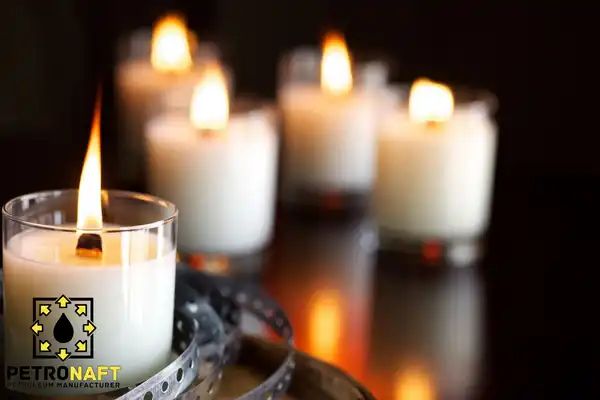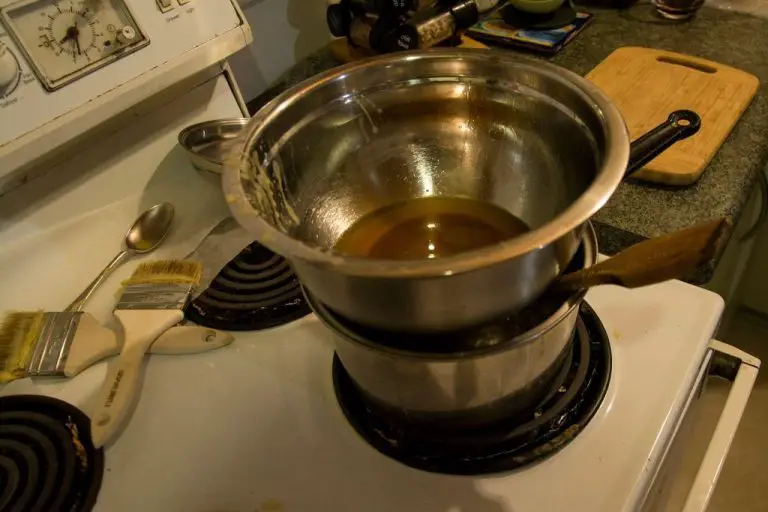What Wax Is Used In Luxury Candles?
Luxury candles are defined as high-end, premium candles made from quality ingredients and complex fragrance blends (ResearchandMarkets.com 2022). Unlike regular candles, luxury candles use more expensive waxes, cotton or wood wicks, unique vessels, and long-lasting fragrances.
The global luxury candle market has seen rapid growth in recent years, driven by rising consumer demand for home fragrances and experiential gifting. Market research predicts the luxury candle industry will grow at a CAGR of 5.4% from 2022 to 2030, reaching a value of $1.18 billion by 2030 (Medium 2022). Luxury candles are increasingly popular for their ability to elevate home ambiance and provide an indulgent, spa-like experience through scent.
Types of Wax Used
There are several types of wax commonly used in luxury candles, each with their own benefits and drawbacks. Some of the most popular types of wax are:
Paraffin Wax
Paraffin wax is a byproduct of petroleum refining. It is the most commonly used candle wax due to its low cost and easy availability (Marthastewart.com). However, paraffin wax produces more soot than other waxes when burned, so it is less commonly used in luxury candles.
Soy Wax
Soy wax is made from hydrogenated soybean oil. It burns cleaner than paraffin with less soot. Soy wax blended candles are a popular eco-friendly option (Luxdeco.com). However, soy wax is softer than paraffin so it may not hold fragrance as long.
Beeswax
Beeswax is secreted by honey bees. It has a natural honey aroma when burned. Beeswax candles are cleaner burning, non-toxic, and biodegradable (Luxdeco.com). However, beeswax is expensive so it is often blended with other waxes in luxury candles.
Coconut Wax
Coconut wax comes from hydrogenated coconut oil. It holds fragrance very well and burns clean. However, coconut wax is soft and susceptible to melting in high temperatures.
Palm Wax
Palm wax is derived from palm oil. It provides excellent fragrance throw and clean burn. But there are sustainability concerns with harvesting palm oil.
Gel Wax
Gel wax contains mineral oil for transparency. It allows vibrant colors and decorative designs not possible with other waxes. However, gel wax can sweat or become tacky in hot environments.
Paraffin Wax

Paraffin wax is one of the most common waxes used in candle making, including luxury candles. It is derived from petroleum and is a byproduct of oil refining (Source: https://www.candlescience.com/wax/paraffin-wax/). Some key properties of paraffin wax that make it suitable for candles are:
- It has a melting point between 46°C – 68°C, allowing it to liquefy at warm room temperatures.
- It solidifies into a smooth, opaque surface that holds fragrance well.
- It’s inexpensive compared to other waxes.
The pros of paraffin wax are that it’s easy to work with, produces strong scent throw, and results in a glossy finish. The cons are that it’s derived from non-renewable resources and can produce more soot than natural waxes when burned (Source: https://www.candlescience.com/wax/paraffin-wax/). Many luxury candle brands use a blend of paraffin and natural waxes to balance performance with eco-consciousness.
Soy Wax
Soy wax is made from soybeans and is a popular natural wax used in luxury candles. Some key properties of soy wax include:
- It has a low melting point of 120-170°F, making it easy to work with.
- It’s soft and pliable, allowing for a smooth appearance and reduces frosting.
- Soy wax burns longer and cleaner than paraffin wax.
- It’s made from a renewable resource and is biodegradable.
Some of the pros of using soy wax for luxury candles are that it’s made from soybeans, a renewable and sustainable crop. Soy wax candles burn longer and cleaner, without producing heavy soot or smoke. The natural scent of soy wax also lets fragrance oils come through nicely. Soy wax has excellent fragrance retention and produces minimal frosting. It’s also praised for an even, smooth appearance.
The main downsides are that soy wax is softer than paraffin, so may not retain detailed shapes as well. It also tends to be more expensive than paraffin wax. There are some issues with getting complete scent throw with soy wax compared to paraffin in certain applications [1]. However, the natural, clean-burning properties of soy wax make it one of the most popular choices for quality luxury candles.
Beeswax
Beeswax is a natural wax produced by honey bees. It has a sweet, honey-like scent and a natural golden color. Beeswax is commonly used in luxury candles because of its many beneficial properties.BeeHiveCandles.com
Some key properties of beeswax that make it ideal for luxury candles include:
- Burns cleanly – Beeswax has a high melting point and burns slowly and cleanly without producing smoke or soot.
- Natural fragrance – The sweet, honey-like scent is subtle and pleasant.
- Golden glow – The natural color emits a warm, golden glow as it burns.
- Non-toxic – Beeswax is non-toxic, making it a safe option.
- Hypoallergenic – Less likely to trigger allergies compared to paraffin wax.
- Sustainable – Beeswax is a renewable and sustainable resource.
The main benefits of using beeswax for luxury candles are its natural, subtle scent, clean burn, and warm ambiance. The drawbacks are that beeswax is typically more expensive than other waxes and can be prone to frosting.
Overall, beeswax is prized in luxury candles for its premium natural qualities and ability to create a pleasant atmosphere.
Coconut Wax
Coconut wax is made from the oil of coconut palms. It has become increasingly popular for use in luxury candles in recent years due to its beneficial properties.
Some key properties of coconut wax include:
- It has a high oil content, which allows the wax to hold more fragrance oil. This results in stronger scented luxury candles (Cite: https://diehlmarcus.com/collections/luxury-candles).
- The wax burns cooler than paraffin, reducing issues like sooting and burning too quickly (Cite:https://thewickandwax.co/collections/luxe-coconut-and-beeswax-candles).
- It’s a harder natural wax, giving good rigidity and shape retention to luxury candles.
Coconut wax has several advantages that make it a popular choice for luxury candles:
- It’s a renewable and sustainable resource.
- The wax burns cleanly without soot or smoke.
- The aroma from fragrances lasts longer compared to paraffin.
- It’s biodegradable and non-toxic.
Some potential drawbacks to coconut wax include:
- It’s more expensive than paraffin wax.
- The wax can lose its opacity and start sweating over time.
- It’s not as hard as beeswax, so may not hold intricate shapes as well.
Overall, coconut wax is prized in the luxury candle industry for its clean burn, strong scent throw, and sustainability. Its beneficial properties make it a popular choice for crafting high-end candles (Cite: https://www.lescremeusa.com/collections/candles).
Palm Wax
Palm wax is made from the fruit and kernels of palm trees and has become popular for use in luxury candles. According to Colonial Candlecrafters, palm wax candles hold fragrance exceptionally well, allowing candle makers to pack lots of fragrance into each candle for a strongly scented experience (source).
Some key properties of palm wax that make it desirable for luxury candles include its hard finish, excellent hot and cold scent throw, and clean burn. The hard finish allows palm wax candles to retain their shape nicely. The strong hot and cold scent throw means they smell great both when burning and when not lit. Palm wax also burns cleanly without excess soot or smoking.
As a vegan and sustainable wax, palm wax appeals to luxury candle consumers who care about eco-friendly and cruelty-free products. However, proper palm oil sourcing is crucial, as irresponsible practices contribute to deforestation. Reputable suppliers like Palm Done Right provide organic, fair trade palm wax from wildlife-friendly, deforestation-free sources (source).
The natural texture and excellent scent throw of palm wax make it a top choice for luxury candle makers seeking an elevated candle experience for their customers.
Gel Wax
Gel wax is a type of candle wax that has a transparent, gel-like appearance. It is made by blending mineral oil with a polymer resin. Unlike other waxes, gel wax remains transparent and does not cloud as it cools (source: https://www.etsy.com/market/gel_wax_candle).
Some key properties of gel wax include:
- It has a smooth, gel-like texture.
- It remains transparent and does not get cloudy.
- It allows colors and scents to remain vivid.
- It has a high oil content, so it burns slowly.
- It does not release scent when cool.
Gel wax is commonly used in luxury candles because of its excellent scent throw and slow, even burn. The transparency allows colors and scents to remain vivid. It can also hold more fragrance oil than other waxes, making the scent stronger and longer lasting (source: https://www.kissmeinthegarden.com/product-page/gel-candle-12-oz-glass-2).
Some potential downsides are that gel wax can be more expensive than other waxes. It also requires mixing powdered polymer with oil, so it can be messier to work with. Proper preparation and pouring techniques are needed to prevent air bubbles in the finished candle.
Overall, gel wax is prized in luxury candles for its clarity, vivid colors, strong scents, and slow burn. Its visual appeal and performance make it a top choice for high-end candle brands and consumers.
Blends
One of the most popular wax blends for luxury candles is a coconut-soy wax blend. Many high-end candle makers like Hive and Honey Candle Co. use a blend of coconut wax and soy wax to achieve the best qualities of both waxes. The soy wax component allows the candle to hold fragrance nicely and burn cleanly, while the coconut wax gives a smooth texture and helps the candle release its scent when cold. Candle makers often find coconut-soy blends strike the perfect balance between performance and luxury appeal.
Another classic blend for luxury candles is mixing beeswax with other waxes like soy or coconut. A small amount of beeswax added to soy or palm wax can help harden the candle and improve burn quality. The Wick and Wax Co. uses a 100% natural blend of coconut wax and beeswax in their luxury gifting candles. The beeswax provides added structure and burn performance. Beeswax is also associated with natural, high-end appeal.
Blending waxes allows candle makers to capitalize on the best features of multiple types of wax. Popular blends tend to mix soy or coconut wax with small amounts of beeswax or paraffin for optimal performance. Luxury candle brands artfully blend waxes to create an elevated candle experience.
Conclusion
When it comes to luxury candles, there are several types of wax that are commonly used. Paraffin wax is the most widely used candle wax and provides excellent scent throw. However, it is made from petroleum and some prefer more natural waxes. Soy wax is a renewable and environmentally friendly option made from soybeans, though it can have issues with scent throw. Beeswax has a wonderful natural honey scent, and coconut wax is also natural while providing good scent dispersion. More niche options include palm wax and gel wax, which have their own unique properties. Many luxury candles also use proprietary wax blends to achieve the desired performance.
In summary, the key takeaways are:
- Paraffin wax is the most common due to excellent scent throw and low cost.
- Soy, beeswax, and coconut wax appeal as more natural options.
- Palm wax, gel wax, and custom blends provide additional options.
- The wax type impacts burn quality, scent throw, appearance, and other factors.
By understanding the properties of each wax, luxury candle makers can select the appropriate option for their specific needs and preferences.



